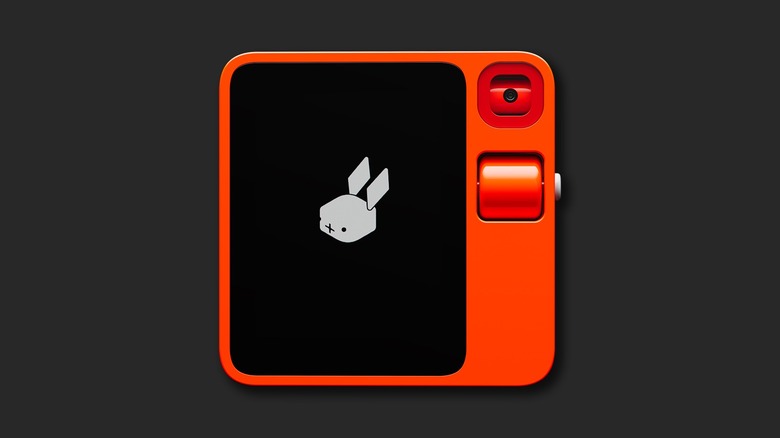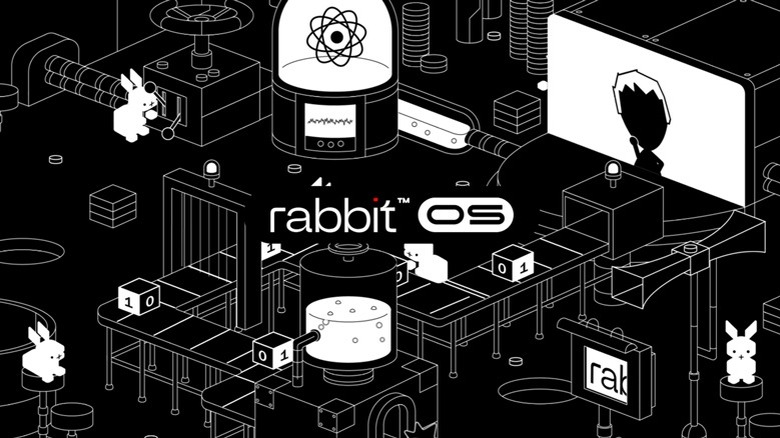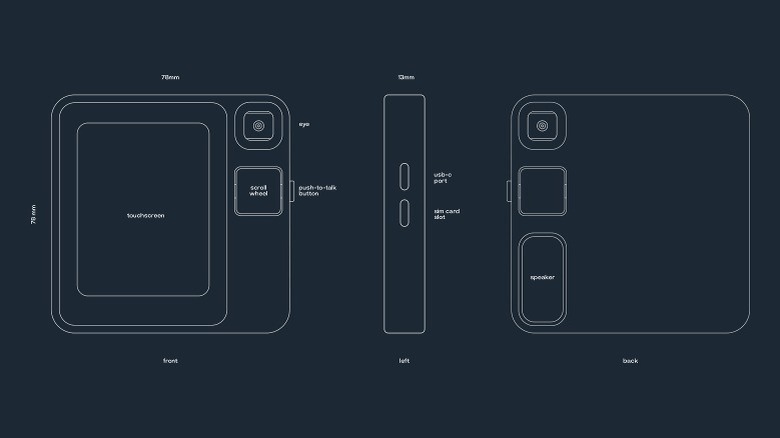Could This AI Device Replace Your Smartphone One Day?
From pen and paper to keyboard and the internet, we've seen tremendous leaps in technology over the decades. While it's true that smartphones have been getting increasingly more powerful and smarter, it seems most of humanity has settled for the standard form of interaction — a touch screen, a few apps, and manual input to get things done. This is where the California-based tech startup, Rabbit, has unveiled what its Founder and CEO Jesse Lyu claims to be "a new era in human-computer interaction," as reported by Business Wire with the launch of the R1 pocket companion.
This bold newcomer challenges the very way we use and interact with our smartphones, seeking to cut the need to perform repetitive actions manually by allowing AI to do it for you. The device runs Rabbit OS, an entirely new operating system that works in conjunction with the Large Action Model to link to the apps you use on a daily basis. Despite the intuitive hardware and the untapped potential of artificial intelligence, is the Rabbit R1 going to replace our smartphones? Most likely not — but the future that AI promises is worth glancing over anyway.
Rabbit OS has potential
The R1 works on top of the Large Action Model, the company's proprietary language model that works more like how ChatGPT does and less like the API-based apps we use on our phones today. Rabbit's LAM needs to be trained, and it learns by observing the user's actions across a varied set of apps over a period. It's claimed that the AI adapts across different apps, even with a shift in interface elements.
The good news is that the operating system will, at launch, already be ready to work with popular applications. The tech startup has plans to allow its users to create and train their own "rabbits" that could aid in performing specific activities across not-so-well-known apps.
Through the online "rabbit hole" portal, users will be able to manage permissions for apps that the R1 has access to. The device only works with authorized access and does not store any user credentials. The dual-array microphone also only works with the button pressed, and the camera, by default, swivels to a position where the lens is physically blocked. In essence, Rabbit OS merely replaces human interaction through the R1 and should not have access to any information it doesn't need.
Rabbit's approach of getting its LAM to understand and work with existing apps has a much higher chance of succeeding instead of getting the masses to adapt to a new operating system altogether — something that has even caused the fall of Nokia and other tech giants.
Impressive hardware with hopeful software
The Rabbit R1 sports a 2.88-inch LCD touchscreen and two rotating pieces of hardware — a scroll wheel to quickly swift between the card-style user interface and a gyrating camera. To the right, you'll find a push-to-talk button and the USB-C charging port with a SIM tray on the opposite side. The device has a 2W speaker and comes fitted with two far-field microphones. Powering the R1 is a 2.3GHz octa-core MediaTek Helio P35 chip running on 4GB of RAM across 128 gigs of storage.
The handheld weighs a mere 115 grams and is available in its punchy orange colorway. The Rabbit R1's unique design aesthetic comes directly from Teenage Engineering, the Swedish-based consumer electronics company that has previously partnered with Nothing for its catalog of interesting-looking hardware. For a price of $199 with no greedy subscription models attached, the device has already sold three batches of 10,000 units with pre-orders open on the Rabbit website.
The R1 is obviously not powerful or even complete enough of a package to replace your smartphone yet. Plus, the limited demos on the CES 2024 show floor make it seem more like an add-on to your smartphone at best. Regardless, owing to the meteoric rise of artificial intelligence, it's interesting to see the direction Rabbit is headed.


